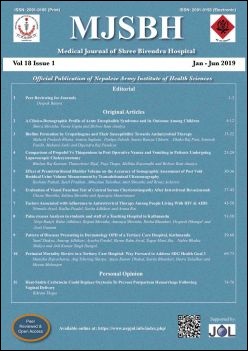Effect of Premicturitional Bladder Volume on the Accuracy of Sonographic Assessment of Post Void Residual Urine Volume Measurement by Transabdominal Ultrasonography
Keywords:
PVRU, LUTS, Ultrasonography, Urine volume estimationAbstract
Introduction: The Post Void Residual Urine volume (PVRU) is frequently significant in patients with bladder outflow obstruction; especially in patients with enlarged prostate and prostatism. The PVRU forms an important part of radiological investigation. Accurate measurement of the residual urine volume changes observed serially over a period of time may indicate clinical progress. The purpose of this study was to evaluate the effect of pre-void bladder volume on PVRU measurements.
Methods: A prospective study was conducted to determine the accuracy of PVRU measurement in patient presenting with lower urinary tract symptoms (LUTS). 50 patients with LUTS were assessed ultrasonographically for pre void and post void bladder volumes during the study period of March 2017 till August 2017. PVRU measurements done in patients with bladder filling sensation at moderate to full capacity resulted in high estimations of PVRU which was quite significant in this study.
Results: There was significant difference in the estimated PVRU between patients having high initial premicturitional volume (546±144 ml) than those with lower or moderate filling volume (261±58 ml) with mean of 173 ml and 35 ml respectively. The difference in estimated PVRU was highly significant with p value of < 0.0001.
Conclusions: Measurement of pre void urinary bladder volume with an uncomfortably full bladder results in high post micturitional (PMRU) values even in most patients without lower urinary tract symptoms which may be false-positive. We advise that initial or pre-void urine volume be measured when the patient has initial or moderate feeling of bladder fullness.
Downloads
Downloads
Published
How to Cite
Issue
Section
License
This license enables reusers to distribute, remix, adapt, and build upon the material in any medium or format for noncommercial purposes only, and only so long as attribution is given to the creator.




